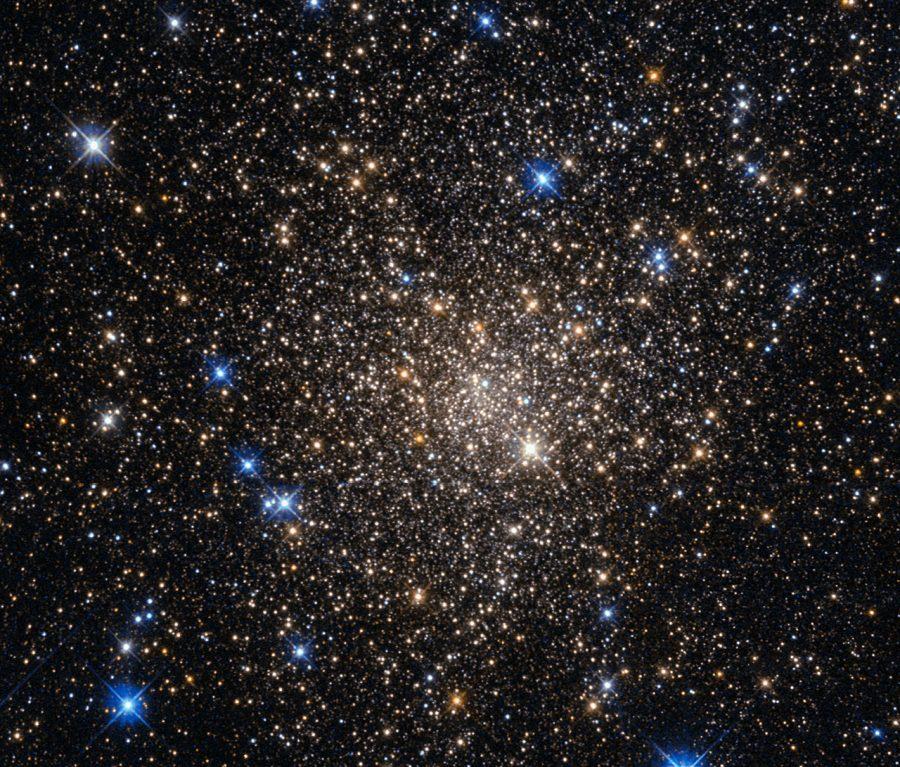1 Billion Stars Mapped
NASA & ESA, Acknowledgement: Ju
This image, taken with the Wide Field Planetary Camera 2 on board the NASA/ESA Hubble Space Telescope, shows the globular cluster Terzan 1.
On September 14 of 2016, the Gaia spacecraft of the European Space Agency released some very interesting data. Over 1 billion stars in the Milky Way Galaxy have been mapped, precisely measuring brightness levels and positioning in space. In addition, differing distances and motion patterns of over 2 million stars have been studied and measured. With over 3 years left in its mission, the Gaia spacecraft and the European Space Agency will create the most illustrious and encompassing view of the Milky Way Galaxy to date. With more and more information being discovered everyday, the excitement is rising as the world advances in its understanding of the universe.
New information that Gaia has discovered will inspire new research in fields across astronomy. By studying astronomical objects with extremely fine detail, the history of our galaxy will be better traced. With knowledge being shoveled in by the bucket-load, scientists will be able to use the ages and structures of the previously mapped stars to predict and study the age and structure of the Milky Way. Advancements in science like these strengthen the urge to construct an even vaster, more accurate picture of our universe.
Alvaro Gimenez, European Space Agency’s Science Director, says “Gaia is at the forefront of astrometry, charting the sky at precision that have never been achieved before.” Gimenez’s confidence in the Gaia spacecraft is backed up by its machinery and scientific technology. The vehicle contains two optical telescopes, working with three other instruments to precisely measure the velocities at which stars are moving, as well as their inherent locations. The craft is constantly spinning at a slow speed, allowing for the detectors to repeatedly track information given off by every star. The stars nearest to our planet will be accurately located to the ever-so-slight margin of .001%. Stars ranging up to 30,000 light years away will be measured to the margin of 20%. Though this may seem like a large margin for error, 30,000 light years is equivalent to 176,000,000,000,000,000 miles, meaning that the telescopes and other equipment are tracking stars at alarmingly far distances. To put this in perspective, the distance to get to an outer-most star at 30,000 light years away is equal to traveling around the world 70,700,000,000,000 times!
The spacecraft itself has, and will continue to, map the galaxy from a location known as the L2 Lagraingian point. This location is in the orbit of the Sun, rather than that of the Earth. It has been chosen because of its better access to a view of the cosmos, as the Earth’s constant change from night to day would cause drastic differences in temperature on the Gaia, causing its ability to map precisely to be slightly altered. The placement of this spacecraft will be key to its success in a large-scale mapping, and the European Space Agency seems to have found a sweet spot in our solar system.
After being informed of these fascinating discoveries, Air Academy’s own Geoff Aebischer was asked about his personal thoughts on the matter. He responded with, “the concepts are too far out there for me to understand. It makes you feel so small!” It can be said with ease that the Gaia spacecraft has sparked an interest in the study of astronomy in Mr. Aebischer, and he plans on immersing himself in the ideology of the stars.
Next time you look up into the night sky, stare at one particular star, chances are that it has been, or will soon be mapped by the technological advancements aboard the ESA’s Gaia spacecraft. As it’s telescopes through us farther into the endless pit that is deep space, more and more secrets will be unraveled. Who knows what ground-breaking discovery will be made next!

I am Calvin Yocum. I am the expert of all poll related operations at the Jetstream Journal. I'm currently in my senior year, and I play basketball and...









Bethany Diaz • Oct 18, 2016 at 12:57 pm
It is so strange to think how huge the universe is. I’m glad that we get to continue to learn more and more about the galaxy. Didn’t they discover that there was a 13th zodiac sign too?
Cole Pearne • Oct 18, 2016 at 11:54 am
Wow! This is an amazing discovery Calvin, technology is a wonderful thing man.